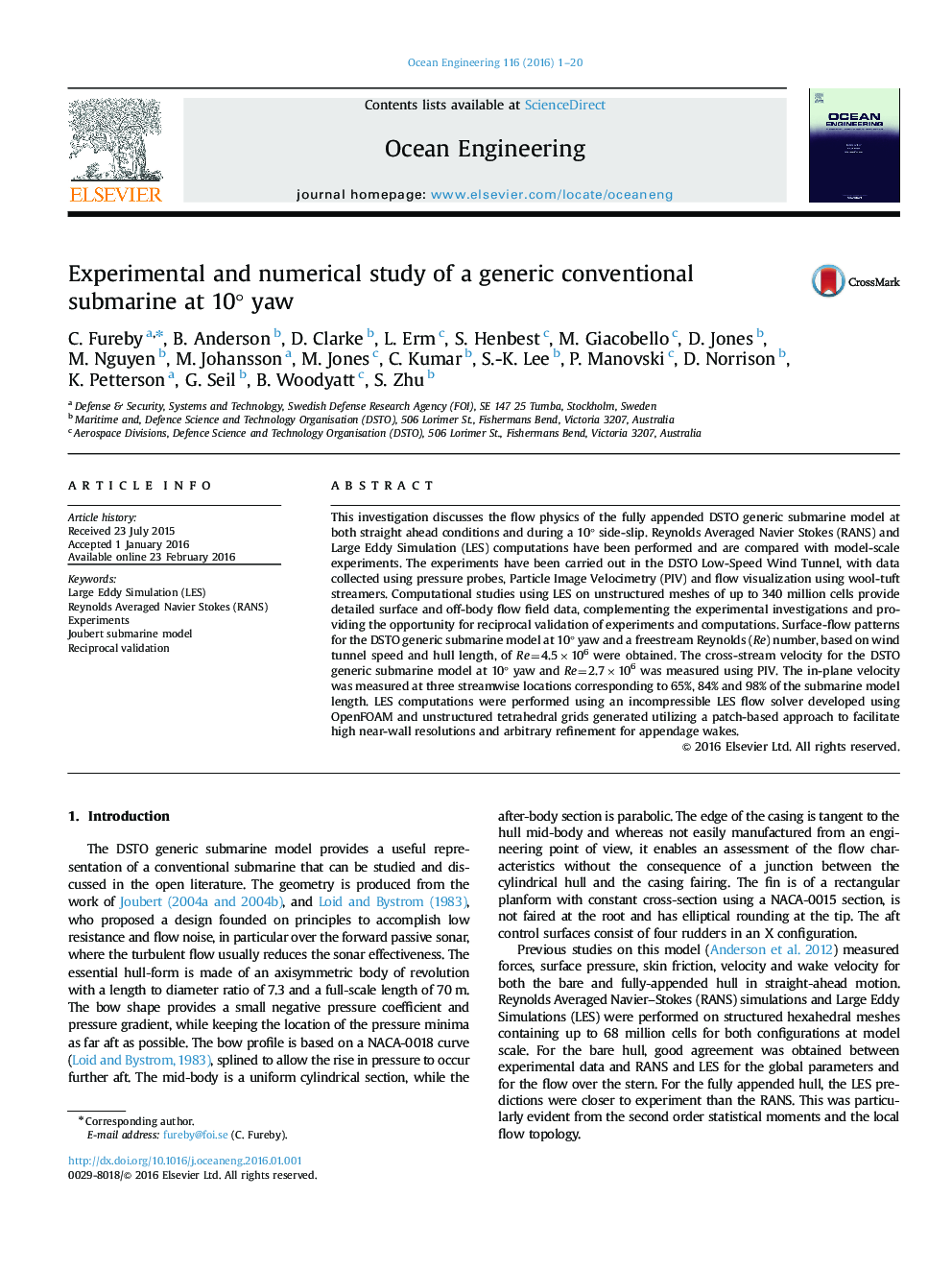| Article ID | Journal | Published Year | Pages | File Type |
|---|---|---|---|---|
| 1725130 | Ocean Engineering | 2016 | 20 Pages |
Abstract
This investigation discusses the flow physics of the fully appended DSTO generic submarine model at both straight ahead conditions and during a 10° side-slip. Reynolds Averaged Navier Stokes (RANS) and Large Eddy Simulation (LES) computations have been performed and are compared with model-scale experiments. The experiments have been carried out in the DSTO Low-Speed Wind Tunnel, with data collected using pressure probes, Particle Image Velocimetry (PIV) and flow visualization using wool-tuft streamers. Computational studies using LES on unstructured meshes of up to 340 million cells provide detailed surface and off-body flow field data, complementing the experimental investigations and providing the opportunity for reciprocal validation of experiments and computations. Surface-flow patterns for the DSTO generic submarine model at 10° yaw and a freestream Reynolds (Re) number, based on wind tunnel speed and hull length, of Re=4.5Ã106 were obtained. The cross-stream velocity for the DSTO generic submarine model at 10° yaw and Re=2.7Ã106 was measured using PIV. The in-plane velocity was measured at three streamwise locations corresponding to 65%, 84% and 98% of the submarine model length. LES computations were performed using an incompressible LES flow solver developed using OpenFOAM and unstructured tetrahedral grids generated utilizing a patch-based approach to facilitate high near-wall resolutions and arbitrary refinement for appendage wakes.
Related Topics
Physical Sciences and Engineering
Engineering
Ocean Engineering
Authors
C. Fureby, B. Anderson, D. Clarke, L. Erm, S. Henbest, M. Giacobello, D. Jones, M. Nguyen, M. Johansson, M. Jones, C. Kumar, S.-K. Lee, P. Manovski, D. Norrison, K. Petterson, G. Seil, B. Woodyatt, S. Zhu,
